Kyoto’s bamboo groves offer one of Japan’s most magical experiences, where towering green stalks create natural cathedrals that filter sunlight into ethereal beams. The most famous grove in Arashiyama has become a pilgrimage site for travelers seeking that perfect Instagram shot, though there’s so much more to discover beyond the obvious photo opportunities. These towering bamboo forests aren’t just beautiful backdrops — they’re living ecosystems with centuries of history and culture woven into every pathway.
Whether you’re planning your first visit or returning to explore deeper, the bamboo groves reveal different treasures depending on how you approach them. Here’s a list of 18 amazing activities that’ll help you experience these natural wonders like a local rather than just another tourist with a camera.
Walk the Main Arashiyama Path
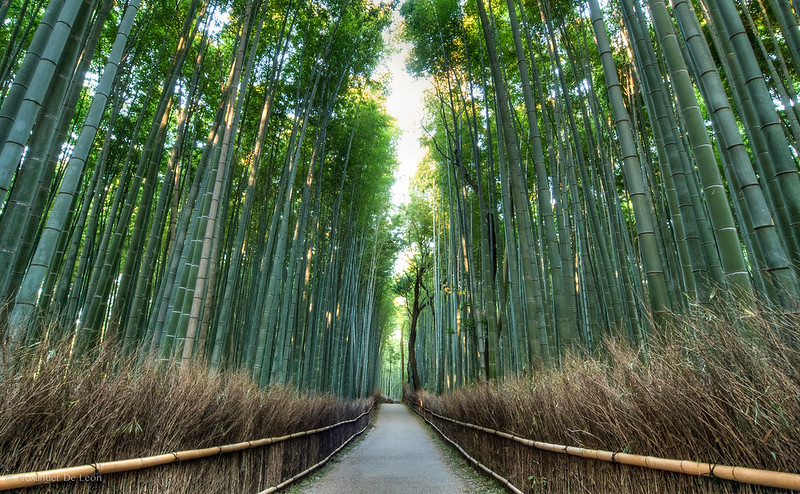
The iconic bamboo pathway in Arashiyama stretches about 500 yards and creates an almost otherworldly tunnel effect as you stroll through. This main trail gets busy during peak hours, yet the experience remains breathtaking even with crowds — imagine walking through nature’s own green cathedral. The bamboo stems can reach heights of 130 feet, creating a canopy so dense that it transforms the quality of light filtering down to the forest floor. Early morning visits around 7 AM offer the most peaceful experience, when the grove feels like your own private sanctuary.
Listen to the Bamboo Music
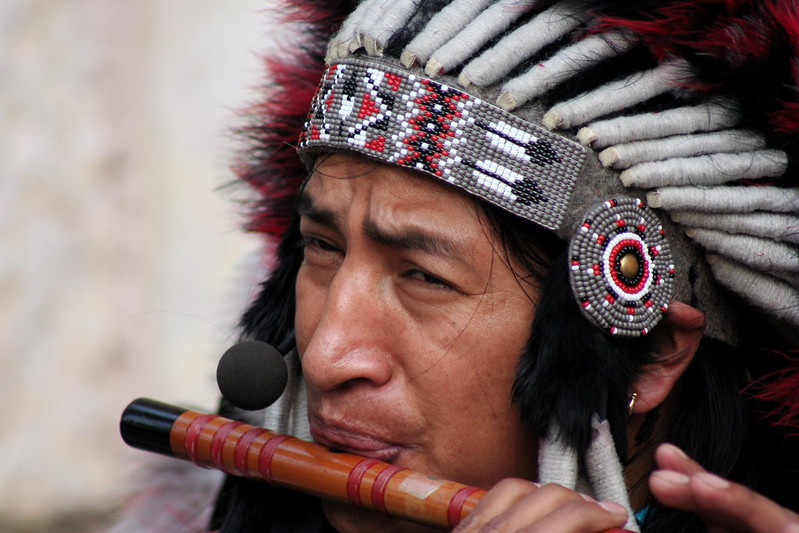
The bamboo grove has its own soundtrack that changes with the wind, creating what locals call ‘bamboo music’ — a gentle rustling and creaking that sounds almost like wooden wind chimes. The Japanese government has officially recognized this natural symphony as one of the ‘100 Soundscapes of Japan Worth Preserving’. When a breeze picks up, thousands of bamboo stalks sway and knock against each other, producing hollow tapping sounds mixed with the whisper of leaves. Standing still and closing your eyes transforms a simple walk into a meditative sound bath that’s completely free.
Visit Tenryu-ji Temple Gardens
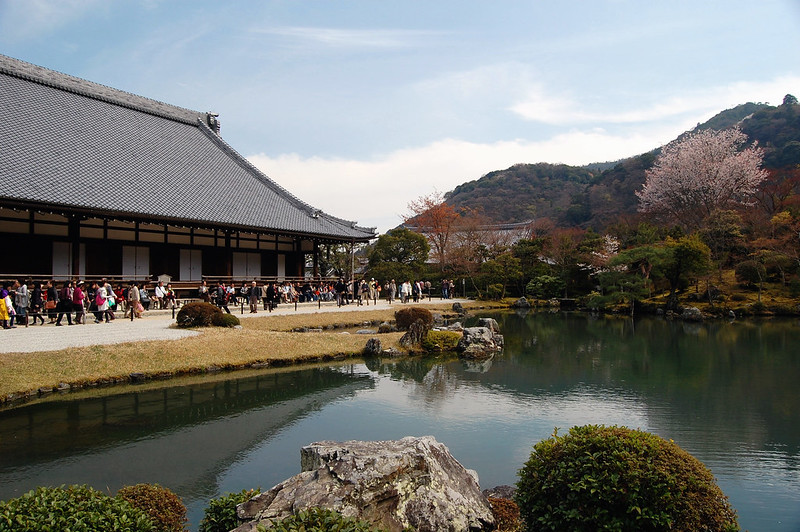
Right next to the bamboo grove sits Tenryu-ji, a UNESCO World Heritage temple with gardens that perfectly complement your bamboo forest adventure. The temple’s landscape garden, designed in the 14th century, features a pond that reflects the surrounding mountains — creating stunning photo opportunities. Walking through these meticulously maintained grounds provides context for how bamboo groves fit into traditional Japanese garden design. The temple also offers insight into Zen Buddhism, and you can often hear monks chanting in the morning, adding another layer to the spiritual atmosphere.
Take Photos at Golden Hour
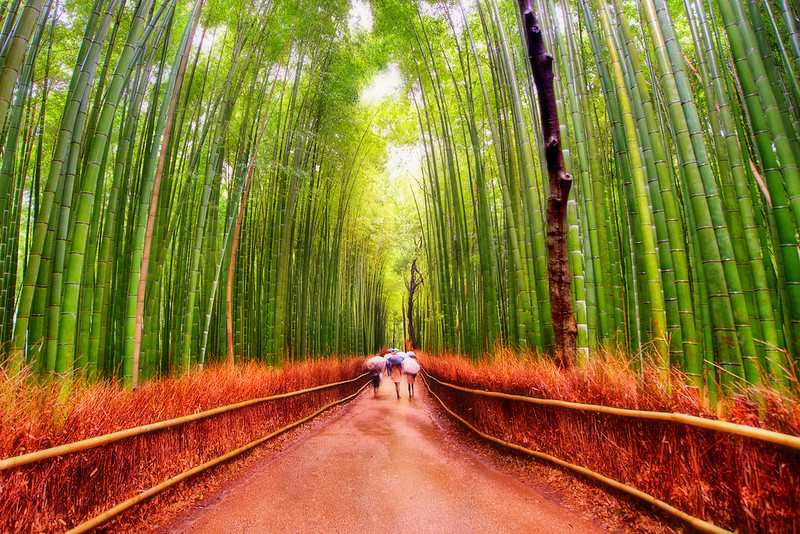
Professional photographers swear by the golden hour in bamboo groves, when late afternoon sun creates dramatic lighting effects between the stalks. The bamboo filters sunlight into gorgeous green-tinted beams that appear almost computer-generated in photos. Unlike many tourist spots where golden hour means crowds, the bamboo grove actually gets quieter as most day-trippers head back to their hotels. Position yourself where gaps in the bamboo canopy allow shafts of light to penetrate — you’ll capture images that look like scenes from a fantasy movie.
Explore the Lesser-Known Paths
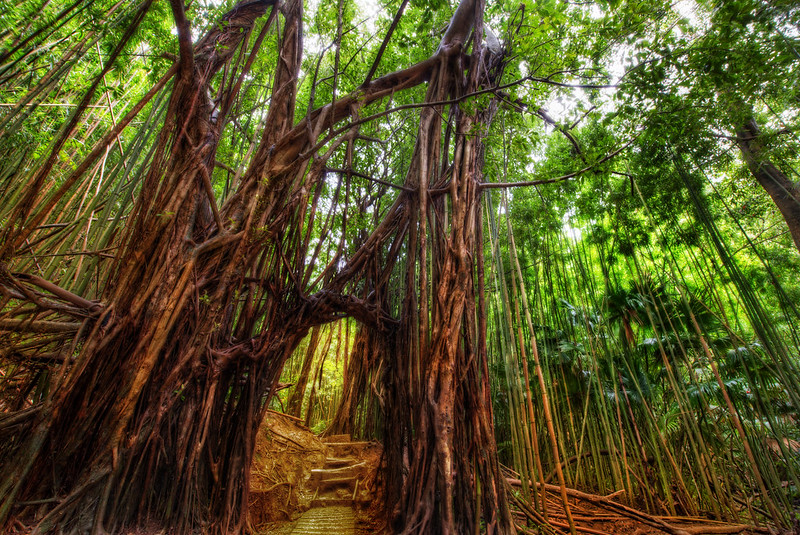
Beyond the main tourist trail, several smaller paths wind through different sections of bamboo forest that most visitors never discover. These side trails offer more intimate experiences with the bamboo ecosystem and lead to hidden clearings where you can sit and absorb the atmosphere without interruption. Local maps show at least five different routes through the grove area, each with its character and density of bamboo growth. Following these paths feels like exploring a natural maze where every turn reveals new perspectives on how bamboo creates its own microenvironment.
Rent a Bicycle for Bamboo Tours
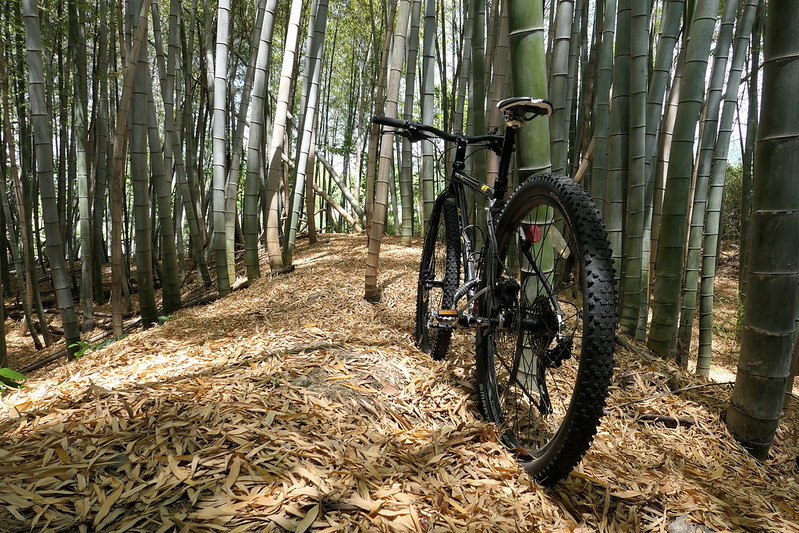
Cycling through and around the bamboo groves covers more ground than walking while still allowing you to appreciate the details of this unique landscape. Several rental shops near Arashiyama Station offer bikes specifically for grove exploration — complete with suggested routes that include both bamboo forests and surrounding attractions. Pedaling through the dappled light creates a dreamlike experience as shadows and sunbeams flash past in mesmerizing patterns. The gentle exercise also helps you work up an appetite for the amazing local food options you’ll discover along the cycling routes.
Practice Morning Meditation

The bamboo grove’s natural acoustics and filtered lighting create ideal conditions for meditation, especially in the early morning hours before crowds arrive. Many locals use these spaces for quiet reflection — you’ll often see people sitting peacefully among the bamboo stalks in the lotus position or simply breathing deeply. The consistent rustling of bamboo leaves provides natural white noise that helps focus the mind and block out urban distractions. Spending even 15 minutes in silent contemplation among these towering plants offers a reset that busy sightseeing schedules rarely provide.
Learn About Bamboo Ecology
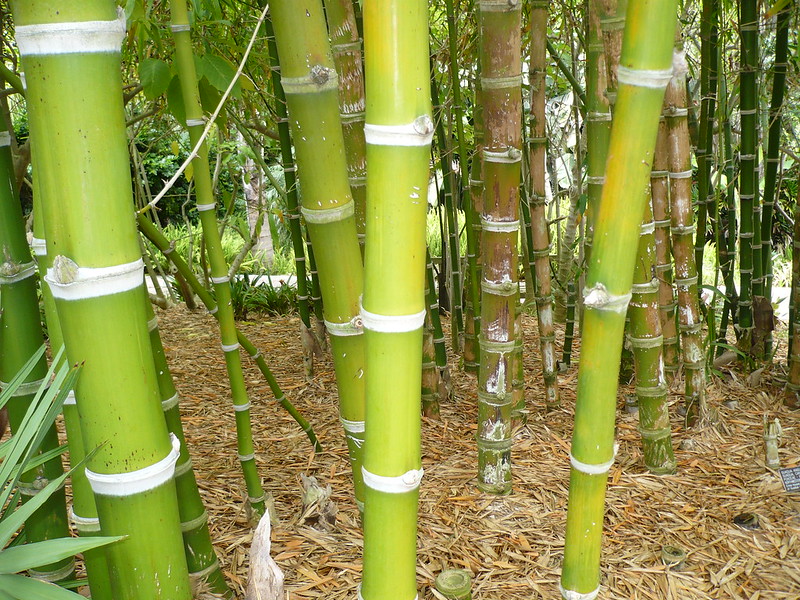
Bamboo grows incredibly fast — some species can shoot up three feet in a single day — making these groves living laboratories for understanding plant growth and forest ecosystems. Educational signs throughout the Arashiyama area explain how bamboo differs from trees, including its grass family origins and unique root system that prevents soil erosion. Observing closely reveals how bamboo creates its own weather patterns, with higher humidity and cooler temperatures inside the grove compared to surrounding areas. Understanding the science behind bamboo’s rapid growth and environmental benefits adds depth to what might otherwise be just a pretty walk.
Visit During Different Seasons
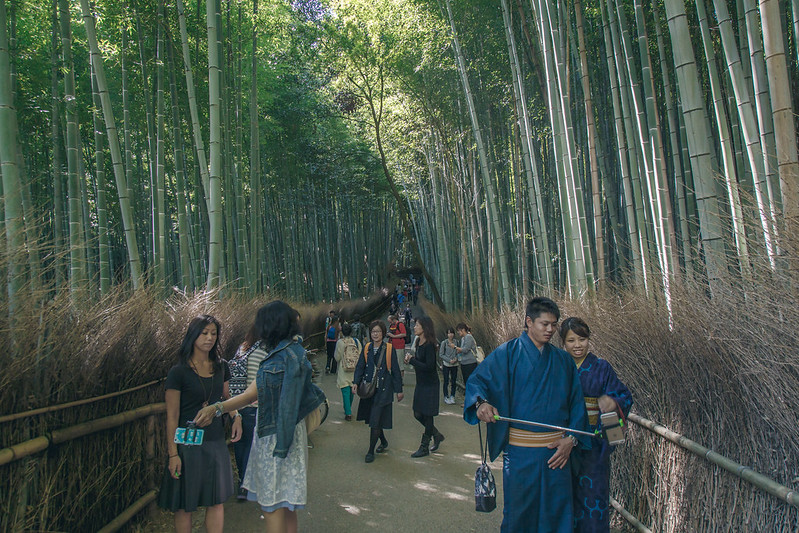
Each season transforms the bamboo grove experience in dramatic ways — from snow-dusted stalks in winter to the fresh green shoots emerging in spring. Summer brings the most intense green coloration and fullest canopy coverage, while autumn adds fallen leaves that carpet the forest floor in golden browns. Winter visits offer the most unique perspective, when occasional snow clings to bamboo leaves and creates stark black-and-white contrasts. Spring showcases new bamboo shoots breaking through the ground, reminding visitors of the incredible growth cycle that creates these towering forests.
Try Bamboo Forest Bathing
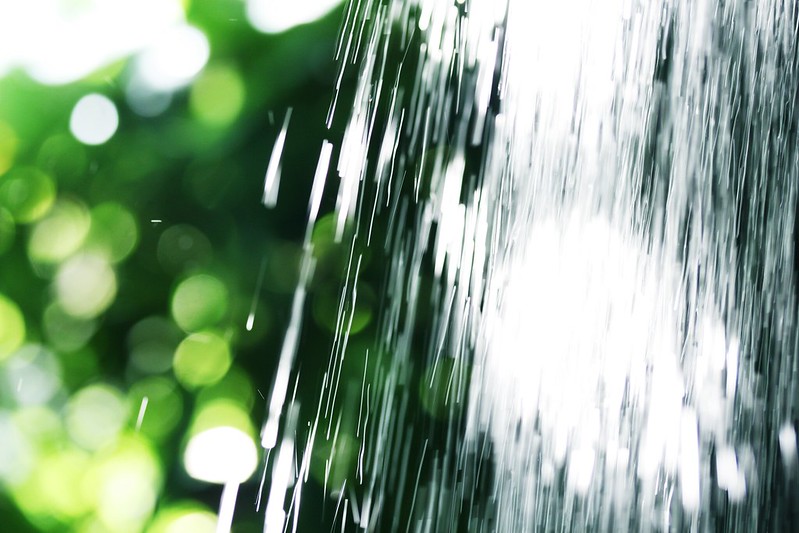
‘Forest bathing’ or ‘shinrin-yoku’ involves immersing yourself mindfully in nature — bamboo groves provide perfect settings for this Japanese wellness practice. The concept goes beyond simple nature walks to include conscious breathing, touching textures, and paying attention to all sensory input from the forest environment. Bamboo forests offer unique textures, sounds, and even scents that differ from traditional hardwood forests, creating distinct forest bathing experiences. Research shows that spending mindful time in bamboo environments can reduce stress hormones and boost immune system function.
Discover Traditional Crafts
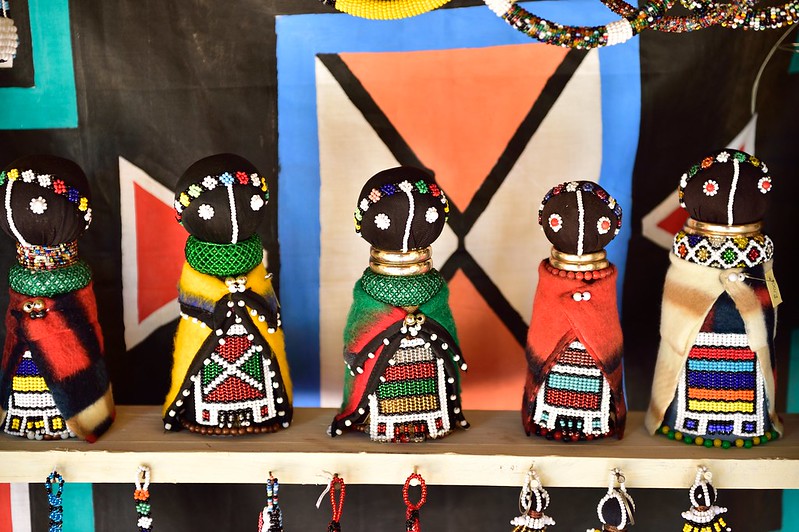
Local artisans near the bamboo groves create traditional crafts using bamboo harvested from these very forests, offering hands-on experiences with this versatile material. Workshops teach visitors how to weave bamboo baskets, create utensils, or fashion decorative items using techniques passed down through generations. Many craft shops display the entire process from cutting bamboo stalks to finished products, showing how this fast-growing plant becomes everything from kitchen tools to architectural elements. Learning these traditional skills provides a deeper appreciation for how bamboo has supported Japanese culture for over a thousand years.
Enjoy Traditional Tea Ceremonies
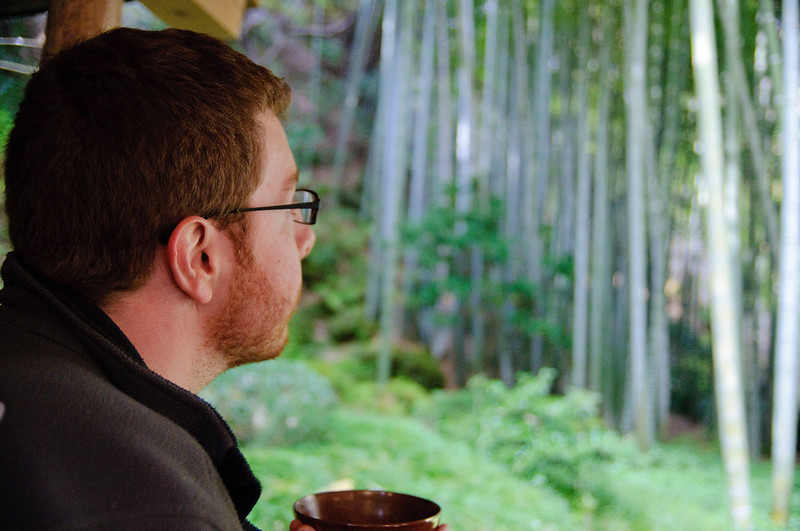
Several tea houses near the bamboo groves offer traditional ceremonies in settings where bamboo views enhance the meditative aspects of this ancient practice. The natural privacy created by bamboo walls makes these tea experiences feel more intimate and connected to nature than indoor ceremonies. Participating in a tea ceremony while surrounded by bamboo adds layers of meaning, as bamboo represents resilience and flexibility in Japanese culture. The contrast between the careful, deliberate movements of tea preparation and the gentle swaying of bamboo creates a uniquely peaceful atmosphere.
Photograph Wildlife Interactions

Bamboo groves support diverse wildlife populations, from birds that nest in the hollow stalks to insects that have evolved specifically to live on bamboo plants. Patient photographers can capture images of Japanese bush warblers, which are heard more often than seen, as they move through bamboo thickets. Butterflies seem particularly attracted to bamboo grove edges, where filtered sunlight creates perfect conditions for wing-warming. Early morning and late afternoon offer the best wildlife viewing opportunities, when animals are most active and lighting conditions highlight their interactions with the bamboo environment.
Sample Bamboo-Based Foods

Local restaurants and street vendors offer foods made with bamboo shoots, providing tasty ways to literally consume the grove experience. Bamboo shoot tempura, bamboo shoot rice, and bamboo shoot soup showcase how this plant has nourished Japanese cuisine for centuries. Many dishes highlight bamboo shoots’ subtle flavor and crisp texture, which pairs well with traditional seasonings and cooking methods. Trying bamboo-based foods while surrounded by living bamboo forests creates connections between the ecosystem and culinary traditions that have sustained local communities.
Create Bamboo Art
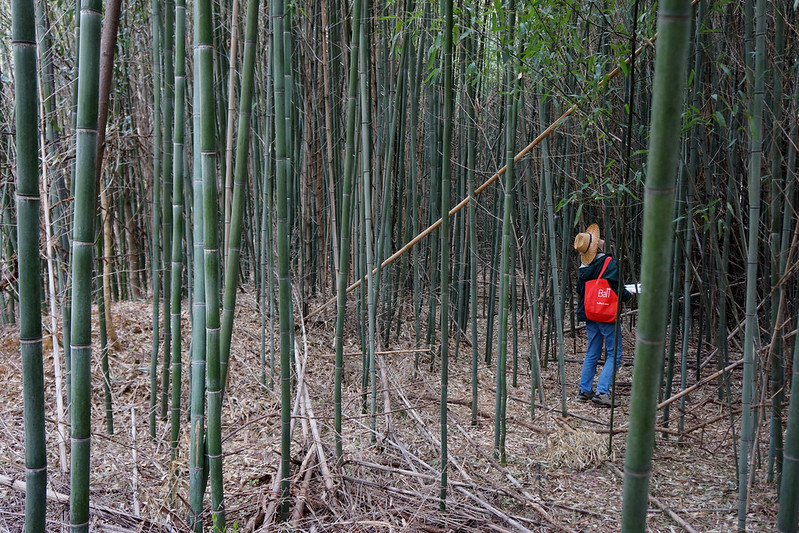
The natural geometry and patterns within bamboo groves inspire artistic expression, whether through sketching, painting, or photography that goes beyond typical tourist snapshots. Many visitors discover that bamboo’s vertical lines, repeating patterns, and play of light and shadow offer endless composition possibilities. Local art supply shops cater to grove visitors with portable easels and sketching materials designed for outdoor use. Creating art among the bamboo helps develop deeper observation skills and personal connections to this unique landscape.
Experience Nighttime Illumination
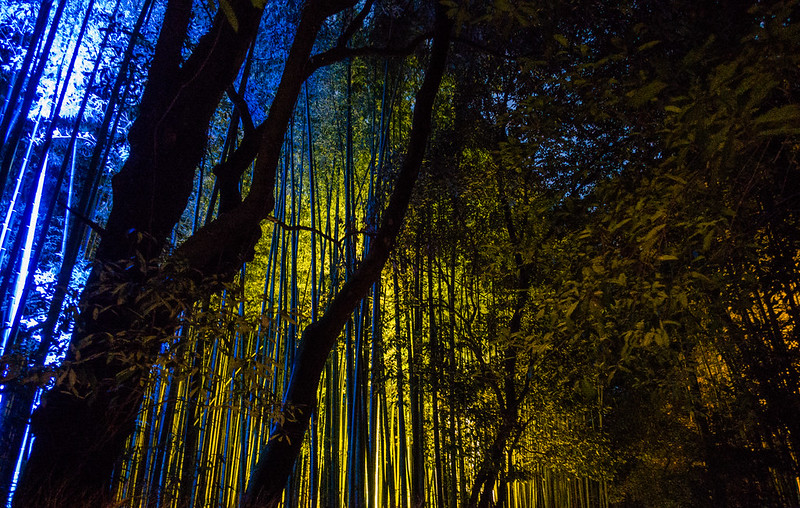
During certain seasons, portions of the bamboo grove receive special lighting that transforms the daytime experience into something completely different and magical. The illumination project uses carefully placed lights to highlight bamboo textures and create dramatic shadows that shift as you move through the pathways. Night visits reveal how bamboo groves change character after dark, with sounds becoming more prominent and the sense of enclosure more intense. These evening experiences typically require advance planning and sometimes special tickets, though they offer perspectives on bamboo forests that few visitors ever witness.
Connect with Local Guides

Knowledgeable local guides offer insights into bamboo grove history, ecology, and cultural significance that transform casual visits into educational adventures. These guides often share stories about how bamboo groves have changed over decades and point out details that casual observers miss entirely. Many speak multiple languages and understand how to pace tours for different interests, whether focused on photography, meditation, or cultural learning. Professional guides also know the best times and locations for specific activities, helping visitors maximize their bamboo grove experiences.
Join Community Conservation Efforts
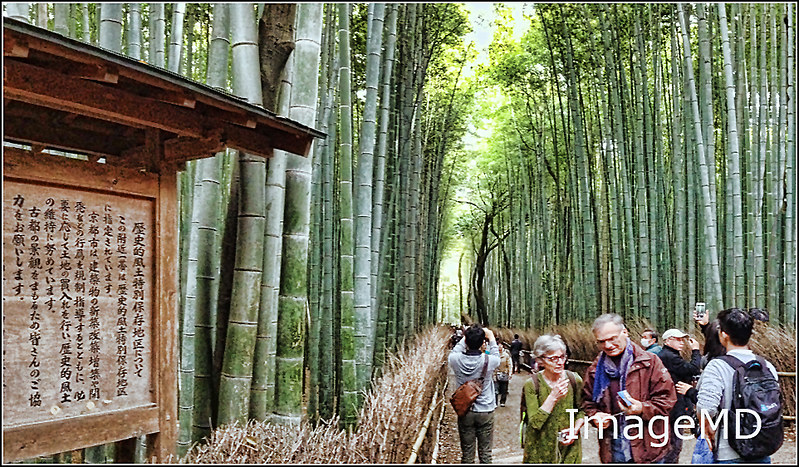
Several organizations welcome visitors to participate in bamboo grove maintenance and conservation projects that help preserve these natural treasures for future generations. These volunteer opportunities might include removing invasive species, maintaining pathways, or helping with educational programs that teach others about bamboo ecosystem importance. Participating in conservation work provides hands-on understanding of the challenges involved in maintaining bamboo forests in areas with heavy tourism pressure. Working alongside local conservationists offers cultural exchange opportunities and deeper connections to the landscapes you’re visiting.
The Living Legacy of Kyoto’s Green Cathedrals
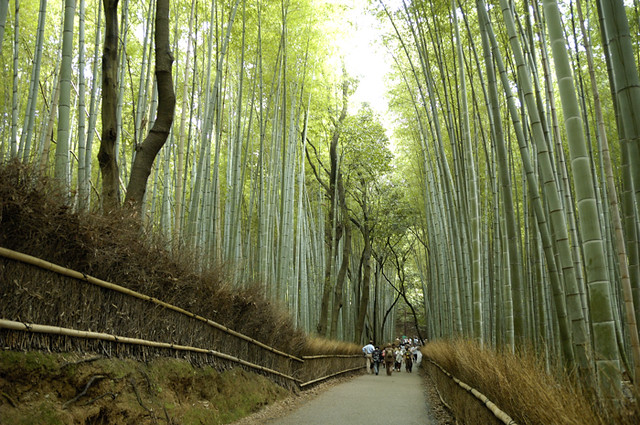
These bamboo groves represent more than just beautiful natural spaces — they’re living connections to centuries of Japanese culture, craftsmanship, and environmental wisdom. What started as practical bamboo cultivation has evolved into one of the world’s most photographed natural phenomena, yet the forests continue serving their original purposes of providing materials, preventing erosion, and creating peaceful spaces for reflection. The activities within these groves bridge ancient traditions with modern experiences, offering visitors ways to engage with nature that go far beyond simple sightseeing. Whether you spend hours exploring every pathway or just a few minutes listening to bamboo music, these towering green spaces remind us that some of the world’s most powerful experiences come from simply standing still among growing things.
More from Travel Pug

- 20 Best Beach Towns in the Carolinas
- 13 Destinations Where Tourists Regularly Regret Their Trip
- 20 Things You Actually Get in First Class
- 20 Small Airports With Aviation Museums
- 20 Places in the U.S. That Are Perfect for a Reset Trip
Like Travel Pug’s content? Follow us on MSN.
